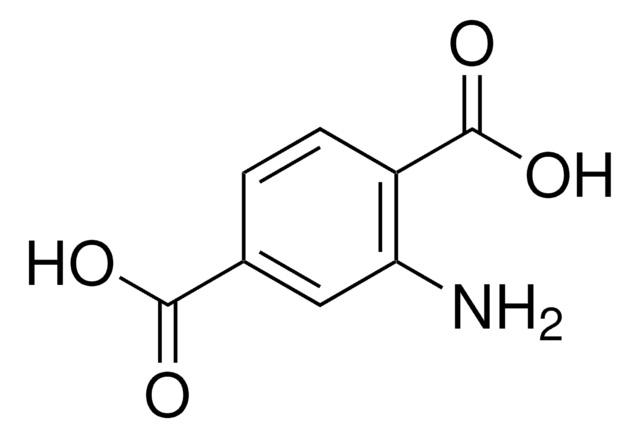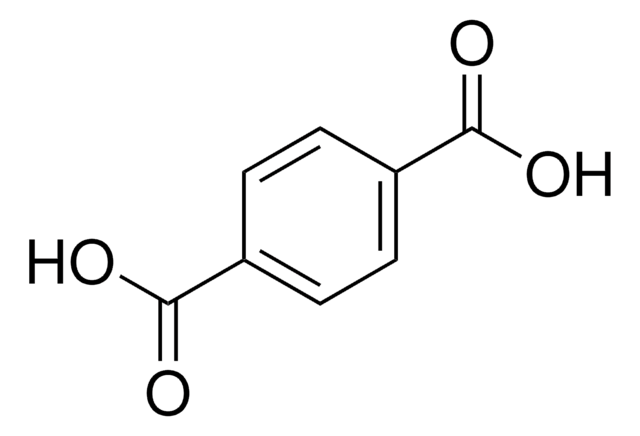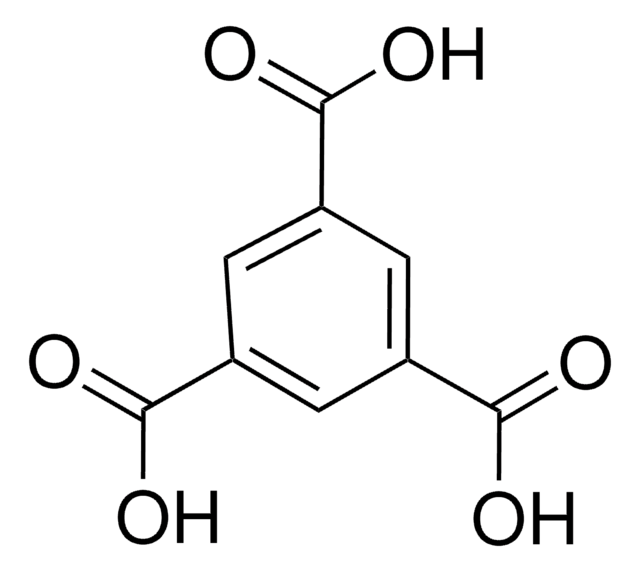Kluczowe dokumenty
221880
Zirconium(IV) chloride
≥99.5% trace metals basis
Synonim(y):
Tetrachlorozirconium, Zirconium tetrachloride
About This Item
Polecane produkty
klasa czystości
for analytical purposes
Poziom jakości
ciśnienie pary
1 mmHg ( 190 °C)
Próba
≥99.5% trace metals basis
Formularz
powder
przydatność reakcji
reagent type: catalyst
core: zirconium
charakterystyka ekologicznej alternatywy
Catalysis
Learn more about the Principles of Green Chemistry.
sustainability
Greener Alternative Product
zanieczyszczenia
≤5000.0 ppm Trace Metal Analysis
temp. przejścia
sublimation point 331 °C
gęstość
2.8 g/mL at 25 °C (lit.)
Zastosowanie
battery manufacturing
kategoria ekologicznej alternatywy
, Aligned
ciąg SMILES
Cl[Zr](Cl)(Cl)Cl
InChI
1S/4ClH.Zr/h4*1H;/q;;;;+4/p-4
Klucz InChI
DUNKXUFBGCUVQW-UHFFFAOYSA-J
Szukasz podobnych produktów? Odwiedź Przewodnik dotyczący porównywania produktów
Opis ogólny
Zastosowanie
Direct amide formation from unactivated carboxylic acids and amines
Hasło ostrzegawcze
Danger
Zwroty wskazujące rodzaj zagrożenia
Zwroty wskazujące środki ostrożności
Klasyfikacja zagrożeń
Met. Corr. 1 - Skin Corr. 1B
Zagrożenia dodatkowe
Kod klasy składowania
8A - Combustible corrosive hazardous materials
Klasa zagrożenia wodnego (WGK)
WGK 3
Temperatura zapłonu (°F)
Not applicable
Temperatura zapłonu (°C)
Not applicable
Środki ochrony indywidualnej
Eyeshields, Faceshields, Gloves, type P3 (EN 143) respirator cartridges
Wybierz jedną z najnowszych wersji:
Masz już ten produkt?
Dokumenty związane z niedawno zakupionymi produktami zostały zamieszczone w Bibliotece dokumentów.
Klienci oglądali również te produkty
Global Trade Item Number
| SKU | GTIN |
|---|---|
| 221880-100G | 4061838777638 |
| 221880-500G | 4061838777645 |
| 221880-5G | 4061838777652 |
Nasz zespół naukowców ma doświadczenie we wszystkich obszarach badań, w tym w naukach przyrodniczych, materiałoznawstwie, syntezie chemicznej, chromatografii, analityce i wielu innych dziedzinach.
Skontaktuj się z zespołem ds. pomocy technicznej












